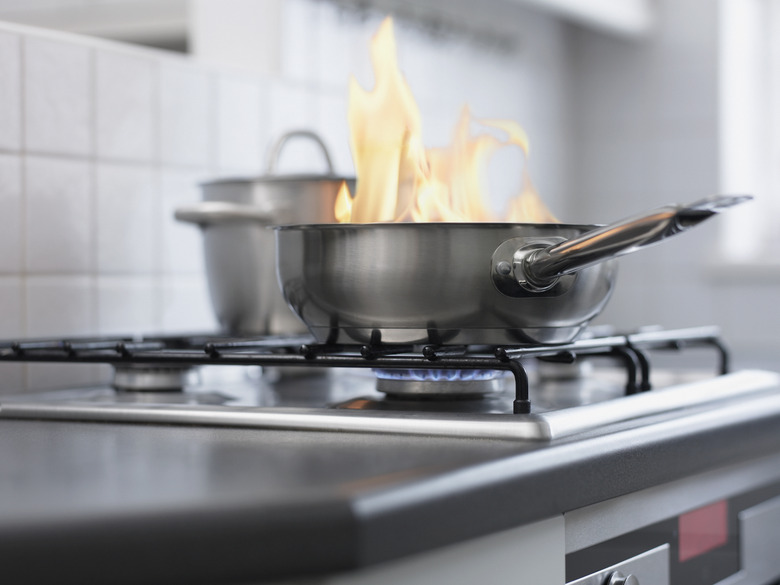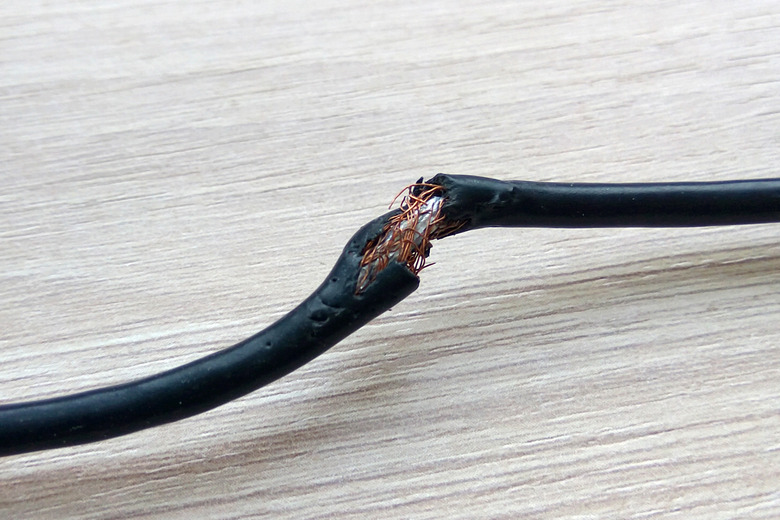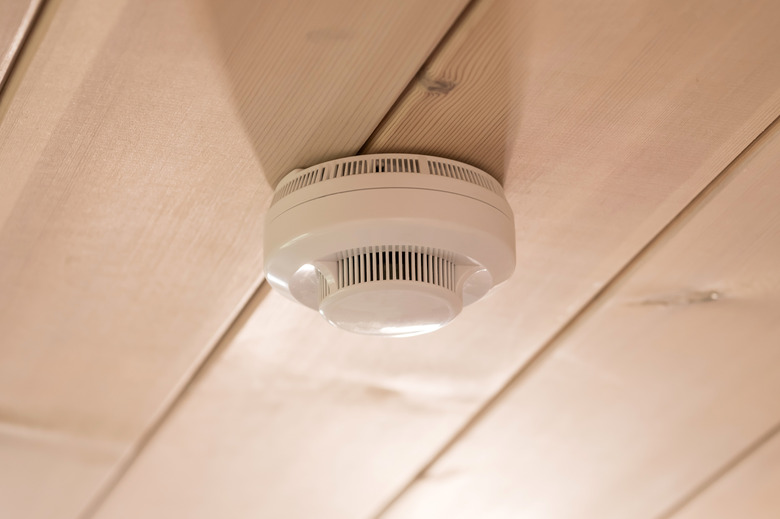The 12 Most Common Home Safety Hazards
We may receive a commission on purchases made from links.
Home is our refuge — but it's also filled with chemicals, fire starters and toxic substances that can easily injure or even kill someone if the proper precautions aren't taken. Asbestos and lead are common home hazards in older structures, but even a brand-new house has its fair share of potential safety concerns. Slippery floors, electrical issues, top-heavy furniture and even cleaning products can be dangerous under certain circumstances (particularly with our youngest family members). With a little maintenance and some basic home safety preventatives, many of these issues can be corrected or avoided altogether to keep your family safe.
1. Asbestos in Older Homes
1. Asbestos in Older Homes
Asbestos is found in many places within homes built before 1978. It's often in the insulation on old boilers and pipes and sometimes in pebblelike, loose vermiculite insulation used in attics and inside walls. It might even be in old linoleum, flooring adhesive, caulk, cement and sometimes drywall. If left alone, the asbestos is generally not a major concern, but during home renovations, sledgehammering through the asbestos-containing material may release the tiny asbestos particles into the air. Prolonged exposure to asbestos can lead to a chance of later developing mesothelioma, which is a specific asbestos-caused cancer.
If you suspect something in your home contains asbestos, contact an asbestos inspection firm to examine and test the material. You can also take a sample yourself and have it tested at a local lab. Be sure to follow standard guidelines for safe sampling.
2. Lead Paint Problems
2. Lead Paint Problems
Some house paints made before the 1980s contain lead, so if your home is older than that, there's a fair chance that lead paint lingers somewhere on its walls, trim or even its exterior. The older the home, the greater the chance it contains lead paint. Lead absorbed into the blood stream can cause lead poisoning, behavioral issues and numerous other health issues, especially for young children. If a home's exterior has lead paint on any of its layers, there's a good likelihood that the soil around the home contains lead too, so it's a good idea to keep any lead-contaminated substances out of reach of children.
Lead test kits help determine whether old paint contains lead, but they're not 100 percent accurate. The best way to tell if your home contains lead paint is to hire a certified lead inspector.
3. Electrical Fire Hazards
3. Electrical Fire Hazards
Although electrical fires are associated with faulty wiring, they can happen even in a home with new wiring if items plugged into outlets have undersized or damaged cords. Any electrical cord with worn insulation is a potential electrical fire hazard if bare wire is visible. Extension cords are also potential safety hazards, especially if an item that draws a lot of current, such as an air conditioner, is plugged into an extension cord that is not designed for such use.
Home fires may also occur within the breaker box or elsewhere if the circuits are overloaded, especially if the wiring isn't properly connected. Any home with old, cloth-covered electrical wiring visible in the attic or basement is due for an electrical inspection and ideally a complete wiring overhaul to make things safer and bring the wiring up to code.
Christmas trees strung with old incandescent lights are also responsible for some fires every holiday season when the bulbs get hot and ignite the dried-out tree branches. Dried-out pines ignite quickly, resulting in a fire that could easily get out of control. For best fire safety practice, only use newer LED bulbs that don't get so hot and be sure to turn off the lights when you're away or before bed each night.
4. Electrical Shock Hazards
4. Electrical Shock Hazards
Electrical shock in a home happens for a number of reasons. An outlet without a cover could be a shock hazard if the bare wires connected to the outlet are accidentally touched — so one of the most basic safety tips is, of course, to place a cover over all outlets.
Outlets near water sources, such as near the tub or the bathroom or kitchen sink, should have ground-fault circuit-interrupting, or GFCI, protection. These function as regular outlets with an extremely important safety feature added: Should an issue occur, such as dropping an in-use hair dryer into a sink full of water, the GFCI shuts off the power to the outlet to prevent a serious shock. These often have a reset button between the plug openings so you can easily turn the outlet power back on once the electrical item has been safely unplugged.
Curious young children are sometimes tempted to push things into electrical outlets. If the item they choose is metal, such as a fork, shock could occur. To keep children safe, place childproof safety caps over all unused outlets to prevent any issues. If you replace old outlets or install new ones, be sure to use tamper-resistant (labeled "TR") outlets, which are designed for child safety and are required for most new outlet installations.
5. Slipping or Tripping Home Hazards
5. Slipping or Tripping Home Hazards
While it's common sense that a wet, smooth floor may be slippery, the water left after a spill or after a floor is washed isn't always obvious until it's too late. For the best slip-proofing, homeowners should choose slightly textured floors for any bathroom with a tub or shower. The areas near entry doors should also have some texture to help prevent slips as people walk in with wet shoes. If replacing a floor isn't an option, place slip-proof rugs in areas where water is common, such as in front of the kitchen sink, in front of the bathtub and inside the main entry points to your home.
Always straighten any area rugs and runners that ripple to prevent trips, especially if you have any children or elderly visitors coming over. Likewise, encourage everyone to pick up after themselves to prevent trips on those late-night treks to the bathroom in the dark.
6. Carbon Monoxide Danger
6. Carbon Monoxide Danger
Carbon monoxide is an odorless gas emitted by burning carbon-based fuels. Gas and wood fireplaces, gas or wood stoves, furnaces, boilers and even the dryer can all emit carbon dioxide into the home. None of these are generally an issue as long as they're properly vented. If there is an issue, too much carbon monoxide gets into the home and could cause carbon monoxide poisoning, which causes confusion, dizziness, headache, loss of consciousness and, in extreme cases, death. Any form of grill also emits carbon dioxide when in use, which is one of the reasons to never grill indoors or in an enclosed area.
Install a carbon monoxide alarm near every sleeping area in a home — just as you would for a smoke alarm. An alarm sounds if too much of the gas is detected in the household air. Many states require carbon monoxide detectors alongside smoke detectors. If using a battery-operated model, change the batteries every year or whenever the detector indicates that the battery's power is low (some alarms have nonreplaceable 10-year batteries).
7. Natural Gas Leaks
7. Natural Gas Leaks
Unlike a carbon monoxide leak, a natural gas leak has an odor thanks to an additive called mercaptan. A natural gas leak increases the risk of fire in the home. If you smell an unusual odor near any gas appliances or anywhere in the house or if you hear a hissing sound where the appliance connects to the gas line, a leak is likely. If the smell of gas is strong, leave the house immediately, and do not turn on the lights. Call the gas company but not until you are outdoors, as a cellphone could trigger a spark.
8. Radon: Long-Term Concern
8. Radon: Long-Term Concern
Radon is a naturally occurring, odorless gas present in some soil and rocks. In small amounts, it's no cause for concern, but if a large buildup of this gas seeps into a home, a person breathing in the gas for years on end may become more prone to respiratory issues or even lung cancer. Unlike carbon monoxide, there is no detector made for radon; instead, a single-use radon test kit does the job (which is often done during a home inspection). Hardware stores and radon-mitigation companies offer these kits. If your home tests for high levels of radon, have a radon mitigation system installed by a certified professional.
9. Fires in the Kitchen
9. Fires in the Kitchen
One of the biggest household hazards is a kitchen fire — and there are at least 172,000 of them every year in the United States according to the National Fire Protection Association. Keep a close eye when cooking meals, especially when cooking on the stove. Be sure to keep flammable items, such as paper or cloth towels, away from burners and out of the stove. Use splatter guards if cooking with grease, as hot grease could cause a fire. Setting a timer is also a good idea; this way, if you do leave the room for a moment, you won't get sidetracked and forget about that meal on the stove. Childproof safety caps for oven and stove knobs also help prevent accidents, especially with gas stoves.
Finally, keep a charged ABC fire extinguisher on hand. Do not throw water on a grease fire; instead, place a cookie sheet over the burning item and turn off the stove. Baking soda or salt come in handy for extinguishing minor grease fires but don't use similar pantry items, as they could make things worse.
10. Tipping Top-Heavy Furniture
10. Tipping Top-Heavy Furniture
Tall furniture that doesn't stick out far from the wall, such as a bookcase or even a narrow dresser, is a serious hazard in a home with young children. Since children like to climb things, they may open drawers or scale the shelves. Anchor any such pieces to the wall if you think they may tip over if a child attempts to climb them.
Never put heavy objects, such as a TV, atop any tall furniture capable of wobbling if accidentally tugged by a child. Also, avoid buying top-heavy pieces if young children live in the home. Even if the furniture seems stable and it's tall, do not put objects that may interest the child within view, as this helps reduce the temptation to climb.
11. Cords on Curtains or Blinds
11. Cords on Curtains or Blinds
Cords to open, close and adjust curtains or window blinds are potentially hazardous to young children. Cord loops are particularly dangerous, as the child's head may become trapped as the loop twists around the neck. Even roll-up blinds with cords on the back, side can be hazardous for young children. To prevent such dangers, replace any window coverings with blind cords with a cordless type, such as curtains that use a wand-style handle to open and close the window covering.
At the very least, keep window-covering cords well out of a child's reach. Move a crib or toddler bed away from windows that have potentially dangerous coverings. Anchor continuous-loop cords to the wall where they are out of the child's reach.
12. Cabinets and Young Children
12. Cabinets and Young Children
Any cabinet within a young child's reach is a potential home hazard, as kids like to explore and probably will if given the chance. Keep childproof safety locks on all cabinet doors, including cabinets up high that contain snacks, as a child old enough to push a chair may be tempted to look for favorite foods in virtually any accessible cabinet. Dangerous chemicals that are in many household cleaners or pesticides should be stored in areas the child cannot access at all, such as in a locked shed or a locked cabinet in the basement.
References
- Kids in Danger: Furniture
- The Mesothelioma Center: Guide to Asbestos in the Home
- U.S. Environmental Protection Agency: How Can I Tell if My Home Contains Lead-Based Paint?
- U.S. Department of Housing and Urban Development: About Lead-Based Paint
- American Cancer Society: How to Test Your Home for Radon
- Centers for Disease Control and Prevention: Carbon Monoxide Poisoning
- Minnesota Department of Health: Carbon Monoxide (CO) Poisoning in Your Home
- U.S. Consumer Product Safety Commission: Window Covering Cords Information Center
- Today's Homeowner: 3 Hidden Electrical Fire Hazards in Your Home
- Safety.com: The Safety.com Guide on How to Prevent Kitchen Fires
- Home Cooking Fires: National Fire Protection Association


